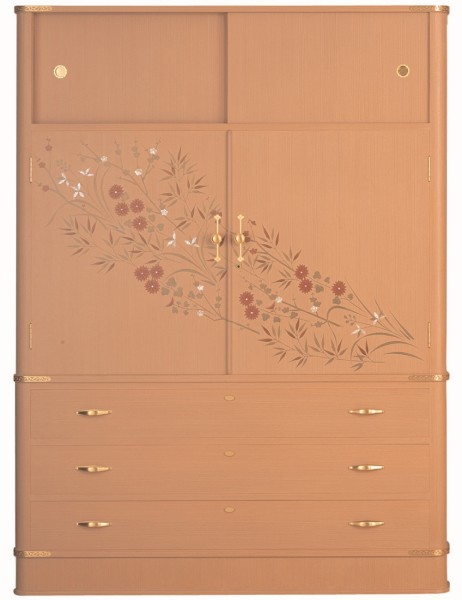
農業をするかたわらに行われた、近所で採れるキハダやキリの木を使った、箱等の簡単な指物作りは、江戸時代中期に始まったと言われています。江戸時代後期から明治時代にかけて一大産地を形成しました。
キリの柾目(まさめ)を活かし、木釘と各種組み接ぎ(くみつぎ)技法を凝らした組立から、磨き着色に至るまで、伝統技法を脈々と伝えています。

Sometime during the 18th century, farmers started making boxes and other simple pieces of cabinetry during slack times of the year, using locally obtained paulownia (Paulownia Sieb. et Zucc.) and cork-tree (Phellodendron Rupr.). This "cottage industry" grew in stature by leaps and bounds after the middle of the 19th century and is still thriving. The traditions of this craft are kept alive by making full use of the quarter-saw boards of the paulownia, which are pieced together using wooden pins and a variety of joints, and then the surfaces are polished and lightly colored.
Because the paulownia is air-dried and seasoned for one to two years prior to being made up, impurities tend not to appear on the surface. Solid boards of paulownia in excess of 20 mm thick are used, especially for the drawer fronts and doors. The wood for this is quarter-sawn in order to express the tightly packed grain of the wood and the finishing of these boards is particularly fine and demands a great deal of skill. There are 9 firms with 72 employees, and 18 nationally recognized Master Craftsmen who are protecting the time-honored techniques of a piece of furniture that, if treated well, should last for a hundred years or more.